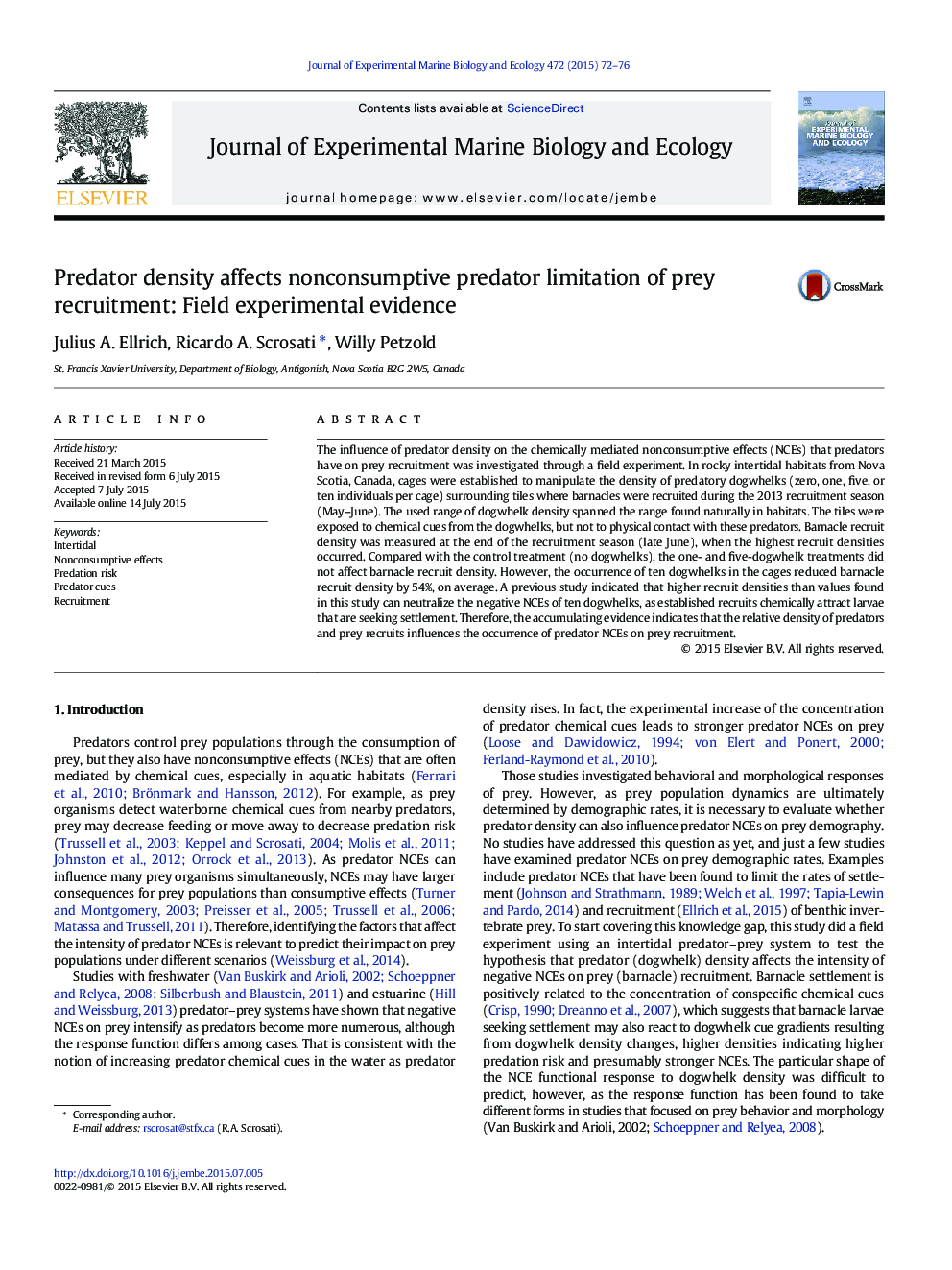| کد مقاله | کد نشریه | سال انتشار | مقاله انگلیسی | نسخه تمام متن |
|---|---|---|---|---|
| 4395357 | 1618403 | 2015 | 5 صفحه PDF | دانلود رایگان |
• We used an intertidal predator–prey system to study nonconsumptive effects (NCEs).
• We experimentally manipulated the density of non-feeding dogwhelks on the shore.
• High dogwhelk densities limited nearby barnacle recruitment.
• Low dogwhelk densities did not affect nearby barnacle recruitment.
• We conclude that predator density affects predator NCEs on prey recruitment.
The influence of predator density on the chemically mediated nonconsumptive effects (NCEs) that predators have on prey recruitment was investigated through a field experiment. In rocky intertidal habitats from Nova Scotia, Canada, cages were established to manipulate the density of predatory dogwhelks (zero, one, five, or ten individuals per cage) surrounding tiles where barnacles were recruited during the 2013 recruitment season (May–June). The used range of dogwhelk density spanned the range found naturally in habitats. The tiles were exposed to chemical cues from the dogwhelks, but not to physical contact with these predators. Barnacle recruit density was measured at the end of the recruitment season (late June), when the highest recruit densities occurred. Compared with the control treatment (no dogwhelks), the one- and five-dogwhelk treatments did not affect barnacle recruit density. However, the occurrence of ten dogwhelks in the cages reduced barnacle recruit density by 54%, on average. A previous study indicated that higher recruit densities than values found in this study can neutralize the negative NCEs of ten dogwhelks, as established recruits chemically attract larvae that are seeking settlement. Therefore, the accumulating evidence indicates that the relative density of predators and prey recruits influences the occurrence of predator NCEs on prey recruitment.
Journal: Journal of Experimental Marine Biology and Ecology - Volume 472, November 2015, Pages 72–76
